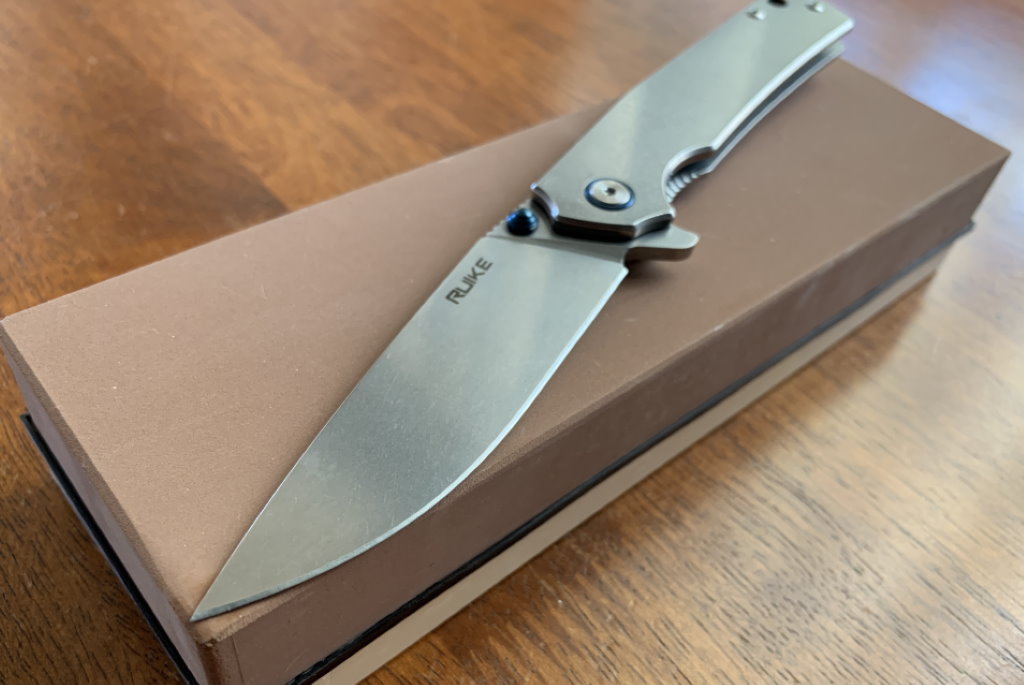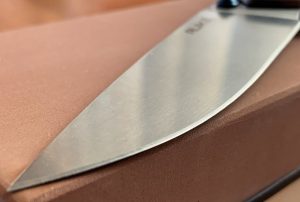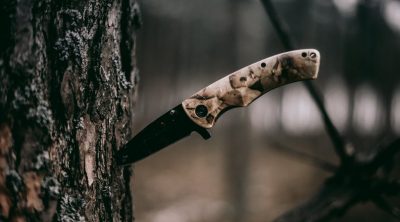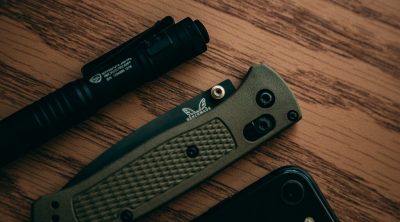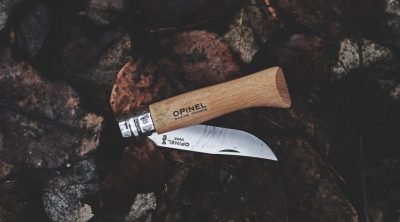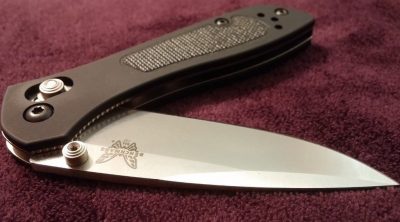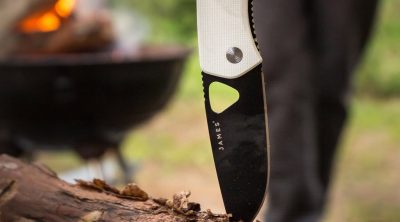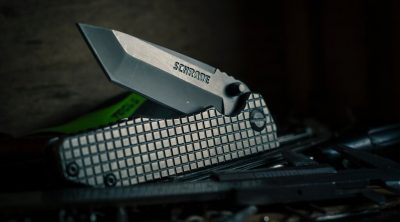Pocket knives are useful tools for everyday carry. They are used in all sorts of situations, from opening envelopes and boxes, food preparation, crafts, and even as a survival tool. For these reasons, knives get dull with use, and proper maintenance and care necessary to maintain sharpness. Remember that a sharp knife is safer to use than a dull knife with a chipped blade. There are several ways you can accomplish this task, and we will look at some methods on how to sharpen a pocket knife.
Sharpening your pocket knives is simple enough to do, and does not take a lot of time. Keep your knives well maintaned and always have your pocket knife ready for the job.
Do these tried and tested methods to sharpen your pocket knife.
What You Need to Sharpen a Knife
Sharpening a knife is not really that complicated. There are only two basic equipment necessary to sharpen a knife. The first is a good sharpening stone, and the second is a lubricant.
A sharpening stone or a whetstone is what you will use to give your knife a good edge. There are many different types of sharpening stones, each comes in a different sizes, grit, and type. Common examples are Japanese water stone, Arkansas stone, ceramic stone, and diamond stone. Choosing a sharpening stone will depend on your preference and experience.
The most basic ones should come with two sides, a rough grit and a fine grit. One stone is good enough for starters but you can get two should you need a choice of rought grit and fine grit. You will start sharpening using the rough grit, then proceed to use the fine grit to further hone the blade.
Using a lubricant reduces friction when sharpening. It also helps get rid of the metal filings created when grinding the knife blade with the stone. Since sharpening produces heat, and can cause damage to your knife blade, using a lubricant is oftentimes necessary. Mineral oil or plain water is used as a lubricant. One thing to remember is to some sharpenings stones does not require a lubricant, so carefully read the instructions of your if it requires it.
Preparing to Sharpen a Knife
Before proceeding with the actual task of sharpening your pocket knife, you need to prepare the necessary tools. You should also inspect the knife you are sharpening so you can plan if the edge needs a touch up, or a more thorough job is required.
Choose your tools
The basic tools for sharpening is a sharpening stone (or honing stone, or whetstone), and lubricant.
There are different kinds of sharpening stones or benchstones. Natural stones, water stones, ceramic stone, or diamond. Choosing a stone is a matter of preference. Use a stone that will work well depending on the type of knife blade steel you are sharpening.
Almost every stone will work for most sharpening tasks, but when dealing with a harder steel like D2 or 154CM, it is better to use a SiC stone (silicon carbide sone) or a diamond sharpener.
If you do not want to shave of much material, and plan to do touch up work to an already fairly sharp blade, you may consider using honing rods or sharpening steel.
For quick touch-ups of the blade edge when outdoors, a pocket sharpener is handy to have. These are small stones or sharpening kits that often has a v-shaped style comprising of a tungsten carbide material and ceramic.
If you fall into the enthusiast category, you may want to get a sharpening system. This will enable you to do a controlled-angle sharpening and experiment with various different edge angles. Examples of a sharpening system are Lansky sharpening kits, Wicked Edge precision knife sharpeners, and Edge Pro sharpening system.
Examine the Blade
Before examining the blade, it is highly recommended to clean the knife first. Wipe off the blade to make sure there are no dirt, stickiness, or grease present. You can use water and a mild soap with a sponge to clean the blade. A clean knife will make it easy to examine the blade for the correct sharpening angle, edge shape, and bevel.
Check the blade well for any defects, you can use a bright light to check the knife edge for any issues. Once you have examined the blade, you can now proceed with sharpening.
Know your Angle
Knives will have different edge types. It is important to know the edge angle or bevel when sharpening. You usually want to keep the same angle just like how the manufacturer did it, unless you would re-profile the blade.
A good tip when starting out is to use a marker along the edge of the blade before sharpening. The ink is removed after a few sharpening stroke and this will serve as a guide if you have the correct angle.
Whats the Best Angle to Sharpen a Pocket Knife
The best angle to sharpen a pocket knife depends on the type of knife and what it is used for. Most knives fall under these general categories: kitchen knives, everyday carry pocket knives or utility knives, and outdoor knives/hunting knives. Choose the angle degrees depending on what you will use the knife for.
Kitchen knives are meant for fine and detailed cutting tasks. An angle of 17° to 20° creates a great edge for food preparation.
An angle of 20° to 25° are excellent for EDC knives and utility knives. These kind of knives will see use cutting harder material so additional edge durability is needed.
For outdoor and hunting knives, it is recommended to use an angle of 25° to 30°.
Anything about 30° is great for toois like an axe or machete where harder use is required.
How to Sharpen a Pocket Knife: Steps for Sharpening
After getting the tools we need and properly examining the knife edge, we can now proceed with sharpening your pocket knife.
With practice, you should easily be able to do the next steps with ease. Now, its time to put that razor-sharp edge to your everyday carry knife.
1. Prep the sharpening stone
Identify the stone that you will use for sharpening. Typically you will start with a rougher stone, then moving to a finer one as you progress with sharpening the blade.
Use your choice of sharpening fluid for the stone. Either water or mineral oil is good as honing fluid. Apply a thin and even layer on the surface of the whetstone. There is no need to drench the entire stone, just ensure that the entire surface is covered with a good amount of oil or water.
2. Sharpen one side of the blade using rough grit
Place the knife blade flat on the stone and at a correct angle. Maintain a constant angle position of the blade while doing the sharrpening stroke. A steady hand is a must, else you may end up with a less than ideal edge.
Repeat the process, gliding the knife along on one side and ensuring you go through the entire length of the sharpening stone. If your knife is longer than the stone, sweep the entire blade across the stone to sharpen the entire length of the blade.
Do at least 10 strokes on this side, and examine the blade for any issues.
3. Sharpen the other side of the blade
Do the other side using similar number of strokes while ensuring that you are still using the correct angle. After doing this for a while, examine the blade and you will se a burr.
After doing one side at a time, continue doing the same stroke but this time on alternate sides.
4. Use a finer grit
Now its time to use a smoother stone. If you are using a stone with two sides, flip it over to use the finer grit. Do the same steps as previously indicated.
Doing this will remove any bumps or burrs along the edge that was formed while sharpening. Check the edge and make sure that you are getting a sharp edge.
You may use a ceramic stone afterwards and do the same motion as the previous steps to further hone the steel and get a sharper edge.
5. Strop
This step is optional, but there are those that prefer stropping the blade after sharpening. Stropping involves running the blade over a strip of leather, and oftentimes with a polishing compound. This gives the edge a final polish and makes it smoother and look better.
If you are asking how to get a mirror finish on a knife edge, and would like to get a polished blade edge. Stropping is very important and do not skip this step.
6. Test the sharpness of the blade with paper
After sharpening, now is the time to test it. Using a piece of paper, try slicing down through using your knife. Get a feel of how it cuts the paper while slicing to know if there are any imperfections on the edge. A properly sharpened blade will easily slide through without any tearing of the paper. If there are any hangs or biting, repeat the process focusing on the point where it doesn’t cut well.
It is Easy to Learn How to Sharpen a Pocket Knife
Learning how to sharpen a pocket knife is an important to have. Knife sharpening skills is handy and very useful. It enables you to keep one of your most important everyday carry tools well maintained, safe to use, and sharp. Always ready for any cutting tasks that it needs to do.
